- Administrator
- Albums and Singles
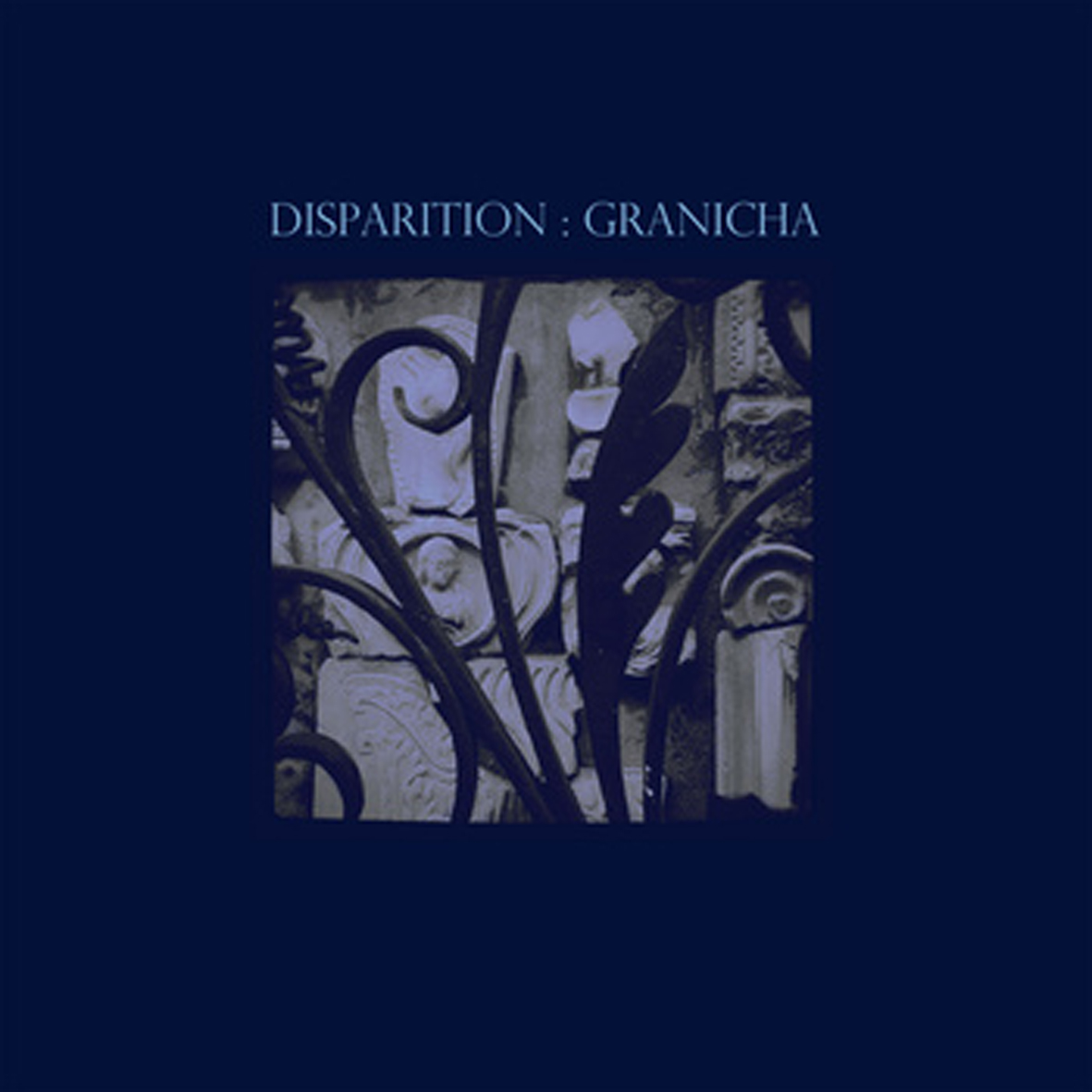
Disparition is the solo project of Brooklyn composer Jon Bernstein, who is best known as the man behind the music for Welcome to Night Vale.  Most of his previous non-Night Vale work has been in the ambient/ambient-techno veins, but this latest release is a wildly ambitious departure, enlisting a large cast of disparate collaborators for a stylistically eclectic This Mortal Coil-style tour de force.  Clocking in at almost 2 hours, Granicha can be a bit of an overwhelming and disorienting listen, but it somehow still manages to err on the side of far too many good ideas rather than too few.
Granicha is a very difficult effort to wrap my head around for a whole host of reasons, which I suppose means that Bernstein is doing something very right: this album certainly does not suffer from lack of ambition, an unwillingness to take chances, or a rigid adherence to convention.  Sometimes conventions are in place for fairly good reasons, however, which is where Granicha occasionally enters some head-scratching territory.  For example, the lead-off "Hexe" is a very hooky, propulsive piece that is roughly in the Massive Attack vein, boasting wonderfully soulful, sensuous vocals by Valerie Evering and some very cool dub-influenced percussion.  All of the necessary components for a great single are in place and they are executed beautifully.  Bernstein had other ideas, however, as the piece dissolves midway into a clattering percussion interlude, then a brief unaccompanied violin motif, then returns to full power in darker, more psychedelic form before ultimately winding down around the 9-minute mark.  The transitions themselves are seamless and enjoyably unanticipated, but it is a little bewildering (and little cool) to see someone so intent on sabotaging their own perfectly crafted pop song.
That conflict between Jon's talent for hooks and tight songcraft and his love of epic, byzantine, proggy multi-part song structures is a curious running theme throughout Granicha.  Usually, however, it works in the reverse direction:  they are plenty of non-hooky, seemingly indulgent pieces strewn throughout the album that are unexpectedly saved by a beautiful transition into a strong melody or groove.  On a related note, I truly cannot stress how stylistically varied Granicha is, sometimes even within the same song.  The high-water water for that eclecticism is the unquestionably the 13-minute "Doggerland," which somehow manages to encompass heavy Tangerine Dream-style space music, operatic Siren-esque vocals from Marnie Breckenridge, a very cool percussion interlude, a quasi-gospel crescendo, and some kind of Flamenco/Middle Eastern guitar coda all within the same song.
Most of the fun of Granicha (for me, anyway) lies in witnessing Jon's compositional gymnastics, as it seems like he is always in danger of digging himself into a hole or hopelessly flogging an unpromising motif, only to imaginatively twist the piece into something that I genuinely like.  The downside to that, of course, is that there are quite of few stretches of Granicha that drag a bit for me (it is a nearly two hour album) even if nearly every individual piece boasts at least one passage of remarkable inspiration.  Also, I would be remiss if I did not mention the craftsmanship.  Specifically, I loved Tim Monaghan's many shifting percussion flourishes throughout the album, but in a more general sense Granicha is a production tour de force: this album is a massive, complexly structured, genre-hopping, multi-layered monster featuring everything from rappers to operatic sopranos, yet somehow it all holds together and sounds consistently assured, crisp, and vibrant.  I cannot begin to fathom how many hours this album took to assemble once the recording was complete.
Finally, Granicha contains at least two songs that I would describe as legitimate, left-field successes that sound like nothing else I have heard: "A Fire in the Distant Hills" and "Book of Arrows," both of which feature obsessively repeating quasi-poetry from vocalist Oswald Starr over a constantly shifting groove.  "Book of Arrows" is especially impressive, as Bernstein ingeniously threads Starr's vocals together with those of Henny Hendrix and Deepthi Welaratna.  The cautiously curious would probably be best served by investigating those two pieces or "Hexe," but Granicha is ultimately a fascinating complete album in a crazy-quilt, overstuffed, anything-can-happen kind of way.  While part of me certainly wishes that Bernstein had pared things down a bit or focused on a single direction, I am probably still much happier with an unpredictable and sometimes unwieldy gamble that forcibly creates its own bizarre niche.
 
Read More
- Administrator
- Albums and Singles
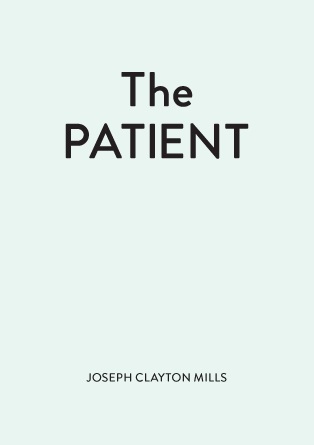 Franz Kafka died of starvation on June 3rd, 1924, his throat cinched by laryngeal tuberculosis. The intravenous delivery of food to sick patients wouldn’t be invented for another 35 years and the swelling in Kafka’s throat caused by the infection made swallowing even water difficult. Forbidden from speaking by his doctor at the sanatorium in Kierling, Austria, Kafka would often communicate with his friends and visitors by writing small notes on scraps of paper. Some such scraps were less notes and more fragments or disconnected ideas, phrases impossible to understand without context. It’s something Max Brod, Kafka’s friend and literary executor, recalls in the opening pages of the booklet that accompanies Joseph Clayton Mills’s The Patient. "Usually these notes were mere hints; his friends guessed the rest," he writes. Mills, accompanied by Olivia Block, Noé Cuéllar (Coppice), Steven Hess (Pan•American, Haptic, Innode), and Jason Stein take a shot at interpreting those fragments on this record, using Mills’s textual score to trace a line around Kafka’s final abraded thoughts.
Franz Kafka died of starvation on June 3rd, 1924, his throat cinched by laryngeal tuberculosis. The intravenous delivery of food to sick patients wouldn’t be invented for another 35 years and the swelling in Kafka’s throat caused by the infection made swallowing even water difficult. Forbidden from speaking by his doctor at the sanatorium in Kierling, Austria, Kafka would often communicate with his friends and visitors by writing small notes on scraps of paper. Some such scraps were less notes and more fragments or disconnected ideas, phrases impossible to understand without context. It’s something Max Brod, Kafka’s friend and literary executor, recalls in the opening pages of the booklet that accompanies Joseph Clayton Mills’s The Patient. "Usually these notes were mere hints; his friends guessed the rest," he writes. Mills, accompanied by Olivia Block, Noé Cuéllar (Coppice), Steven Hess (Pan•American, Haptic, Innode), and Jason Stein take a shot at interpreting those fragments on this record, using Mills’s textual score to trace a line around Kafka’s final abraded thoughts.
"The goal of this document is to suggest a vocabulary of actions," Mills writes. "It should in no way be seen as prescriptive or comprehensive, and the sequence of elements in this document should not be construed as implying a particular linear arrangement."
The 52-page score for The Patient bears only a passing resemblance to traditional musical scores. It contains a couple of references to particular notes in the Western 12-tone system, a few bar lines (one set displays both a treble and bass clef, but is otherwise blank), a few more very precise frequencies for sine wave generator, and even a reference to Wagner’s "Tristan chord," but the majority of it is filled with suggested actions of the sort written by George Brecht, La Monte Young, and Pauline Oliveros. They read, "play for longer than you think you should" and "image of water/droplets/dew" and "hushed breath/for unvoiced bellows/vocalist/friction on drumhead."
Together they are enough to constitute a composition, only the number of performers is unspecified and there are no instructions for how to string individual performances together. Participants have only Kafka’s quotes and Mills’s accompanying directions to guide them, along with a handful of photographs, drawings, medical diagrams, story excerpts, and historical summaries. None of it is prescriptive, but all of it sets a very particular tone, which is why, despite the score’s innate openness, this performance of The Patient sounds so compact, controlled, and potent. The instruments and sounds used to build it—piano, walkie-talkies, an accordion, bass clarinet, and even pages torn from a psalter—reflect Kafka’s illness brilliantly. They are harsh at times, and dry; distorted and lethargic; then atmospheric and feathered with granular noise. When they appear, words and phrases rise almost to intelligibility, then stop abruptly. They are threaded with interference, whispered breathlessly, and cut off as if by pain.
Still, every component is clearly expressed, even when it's truncated or mangled. Most passages are uncluttered and there are long spells of silence or near silence scattered throughout each of the piece’s seven mostly instrumental parts, but that only emphasizes the anguish in the sounds. It’s as if the audible distress of Kafka’s tuberculosis, latent in the notes he wrote, has been brought back to life. The wheezes, spasms, and sudden shocks of panic aren't just musical expressions, they're echoes of his condition that have traveled quietly through time for nearly 90 years.
But does it have to be so? Could The Patient ever be just an index for future performers, and so escape the gravity of Kafka’s life? What Mills put on the CD is a combination of improvised sounds inspired by his own text and a conscious arrangement of those sounds assembled after the fact. In this case, it’s almost impossible not to think of Kafka and A Hunger Artist or Before the Law because the text and the music is so filled with Kafka's voice, no matter how scattered and disembodied. Maybe we access Kafka’s private world by a secret musical door he never suspected, but that this world is put together from fragments and disconnected ideas constantly nags the mind. Whatever narrative can be spied in those scraps of paper, they’re a product of reflection, not the scraps themselves. The score sets a tone, but that tone could slip away like a breath if the performers wanted it to.
This particular performance pays homage to the score’s inspiration, but another might focus on the peonies, birds, or durations mentioned by Kafka in his notes. Yet another might obscure Kafka almost entirely and present a series of bodiless inflictions instead. That Kafka could disappear behind his own text is fitting. "Order and accidents seem equally impossible," he wrote. The Patient renders that paradox beautifully and asks its participants, whether listener or performer, to decide whether order or accident prevails.
samples:
 
Read More
- Administrator
- Albums and Singles
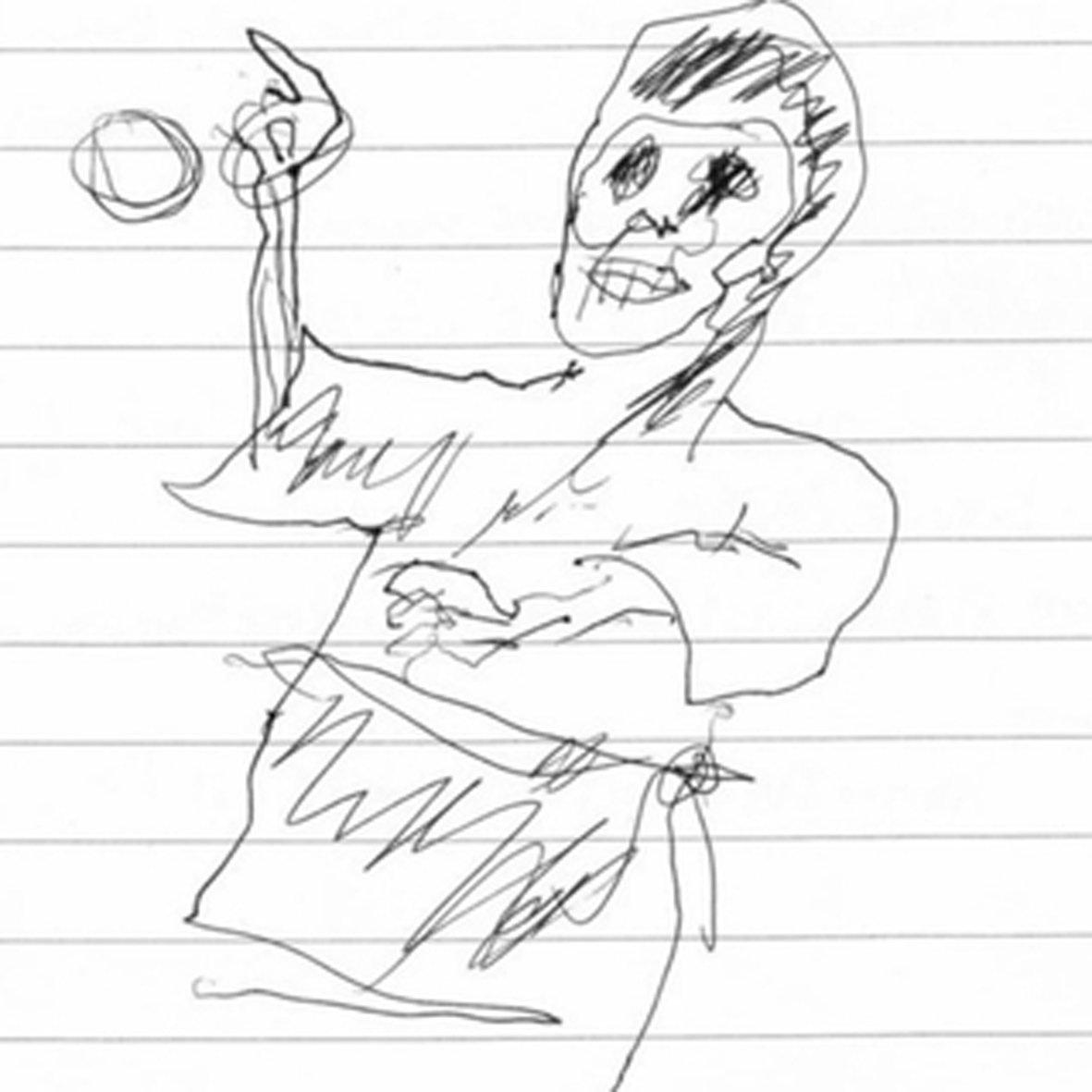 Drumm’s latest is quite an unusual and expectation-subverting one, given that his previous releases for the label have largely been genre-defining noise masterpieces. Trouble is definitely not that, nor does it bear much in common with any of Kevin's other major efforts.  Billed as "54-minute excursion into the netherworld of the audio spectrum," the piece is an extremely quiet and amorphous experiment in queasily dissonant harmonies that teeters dangerously close to being complete silence.
Drumm’s latest is quite an unusual and expectation-subverting one, given that his previous releases for the label have largely been genre-defining noise masterpieces. Trouble is definitely not that, nor does it bear much in common with any of Kevin's other major efforts.  Billed as "54-minute excursion into the netherworld of the audio spectrum," the piece is an extremely quiet and amorphous experiment in queasily dissonant harmonies that teeters dangerously close to being complete silence.
As a Kevin Drumm fan, I am deeply conflicted and exasperated by this album.  On the one hand, I am delighted that he has managed to avoid repeating himself and that he continues to push himself into new realms of experimentalism.  Whatever it is, Trouble is definitely not something that can be reasonably categorized as drone, ambient, or noise.  Nor could it be described as unambitious, as Kevin weaves a nuanced web of eerie, uneasily overlapping swells and hums for almost an hour.  Unfortunately, it all adds up to a bit of a frustrating listening experience for some very fundamental reasons.
For one, Trouble is an extremely quiet album that amounts to little more than faintly disquieting background noise unless it is played at a crazily high volume.  I realize that this was a deliberate artistic choice, but that does not make it less frustrating.  Secondly, Trouble does not feel like an actual composition.  Rather, it is just something that happens for an hour, then stops happening.  It could have just as easily gone on for ten minutes or six hours instead.  Without any kind of progression or arc, there is no real reward for attentive, prolonged listening–just a lot more of the same. It is like Kevin sonically snuck into my apartment to paint all of my white walls an extremely subtle shade of off-white that I would never notice unless I knew he had done it: plenty of effort for no discernible reason.
Of course, it is possible (and desirable) to use volume-leveling software to make Trouble a far more engaging and audible experience, but that is not the album Kevin intended: he clearly wanted to make nearly imperceptible sonic wallpaper, something aggressively contrarian, or some kind of dark successor to Cage's "4'33"".  Whatever the purpose, it certainly seems like an extremely quixotic endeavor to me.  I am completely mystified as to why this ended up as a formal Editions Mego release rather than just a self-released Bandcamp or CDR experiment.  Trouble is strictly for serious Drumm fans only, as it is only interesting because it was made by Kevin Drumm.
- Excerpt One (volume enhanced)
- Excerpt Two (volume enhanced)
- Excerpt Three (original volume)
 
Read More
- Administrator
- Albums and Singles
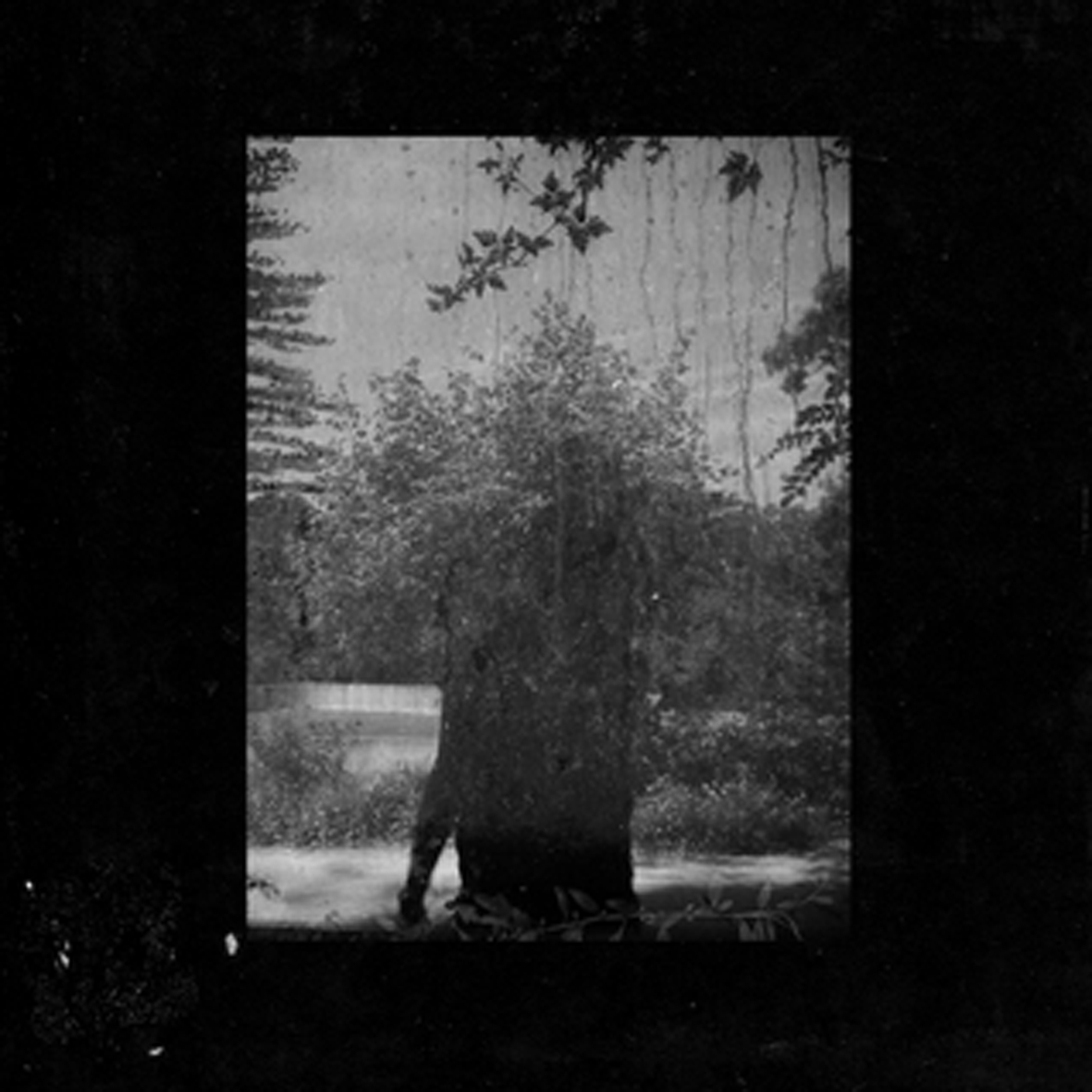 Liz Harris is becoming an increasingly complex and compelling artist, as her discography has started making unexpected leaps into the past that feel like leaps into the future.  Originally recorded in Portugal in 2011 with only a four-track and a piano, Ruins feels like a bold yet natural progression from last year's excellent The Man Who Died in His Boat (itself recorded from 2008 and 2010).  Consequently, it is completely unclear whether Liz is moving towards a simpler, more naked approach in general or if this is just a one-off experiment before she unleashes another salvo of reverb-soaked dreaminess à la Alien Observer/Dream Loss.  Regardless of its place in Grouper's continued evolution, however, Ruins is yet another fine album, boasting several of Harris's strongest compositions to date.
Liz Harris is becoming an increasingly complex and compelling artist, as her discography has started making unexpected leaps into the past that feel like leaps into the future.  Originally recorded in Portugal in 2011 with only a four-track and a piano, Ruins feels like a bold yet natural progression from last year's excellent The Man Who Died in His Boat (itself recorded from 2008 and 2010).  Consequently, it is completely unclear whether Liz is moving towards a simpler, more naked approach in general or if this is just a one-off experiment before she unleashes another salvo of reverb-soaked dreaminess à la Alien Observer/Dream Loss.  Regardless of its place in Grouper's continued evolution, however, Ruins is yet another fine album, boasting several of Harris's strongest compositions to date.
I thought I had a fairly solid understanding of Harris's aesthetic before last year, imagining her primarily as stylist who trafficked in a sensuous strain of reverb-swathed melancholy.  She could be a good songwriter too, but the songs were kind of beside the point, as Grouper was mostly about mood and murk.  Then the otherwise characteristically bleary and shadowy outtakes collection The Man Who Died in His Boat offered up a quietly devastating voice-and-acoustic guitar piece ("Living Room") that eschewed all of Liz's normal artifice to tower above the rest of the album.  Now Ruins goes one step further, delivering (almost) an entire album of reverb- and artifice-free piano ballads.  Rather than shrouding herself in soft-focus unreality, Liz goes for total naked realism this time around, even going so far as to leave in any outside sounds (frogs, a beeping microwave) that her microphone picked up.
There are some major threads linking Ruins to Grouper's other work, however, as Liz's pervading sense of melancholy and penchant for hushed understatement remain completely intact.  If anything, Ruins might be more melancholy than usual, as it sounds more tender and wounded than sensuous (it was recorded while "living in the remains of love," according to Liz).  I guess that makes this Grouper's "break-up album" mood-wise, but there is quite a lot of other stuff going on here as well.  Context-wise, Ruins was recorded at a residency near a beach, so it was also inspired by lots of hiking and comparative quiet in a place far away from her home in Portland, which comes through in its clarity, beauty, and simplicity.  When it works, Ruins is wonderfully raw and direct.  Sometimes it certainly errs on the side of being too dirge-y, but pieces like "Clearing," "Lighthouse," and especially "Holding" are hypnotic in their unhurried elegance (and they boast some very strong melodies as well).
The worst thing that can be said about Ruins is that it is a bit too one-dimensional and monochromatic to fully work as a complete album.  Harris breaks things up a bit at the end with a lengthy instrumental drone piece from 2004 that features a return to her characteristic haze ("Made of Air") and opens the album with a brief, gently throbbing soundscape, but Ruins is otherwise just six languorous, bittersweet piano ballads in a row.  That would probably test my patience from anyone.  Also, the instrumental bookends feel like mere padding rather than anything substantial.  Taken on a song-by-song basis, however, Ruins easily stands with Liz's best work, as arguably half of the six "real" songs are legitimate career highlights.  It is rare to experience such a direct, unfiltered, and fearless emotional connection from a mere recording, especially one from an artist who has previously been so well-cloaked in a fog of effects.
 
Read More
- Administrator
- Albums and Singles
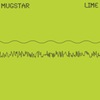 Following quickly on from last year’s …Sun, Broken…, Mugstar have extended the formula that blew me away on that previous album and have made an impossibly shimmering, psychedelic and, most importantly, rocking album. Lime may not rewrite the history of rock music but it does act like the fruit it is named after, it cuts through the senses in a most pleasant fashion.
Following quickly on from last year’s …Sun, Broken…, Mugstar have extended the formula that blew me away on that previous album and have made an impossibly shimmering, psychedelic and, most importantly, rocking album. Lime may not rewrite the history of rock music but it does act like the fruit it is named after, it cuts through the senses in a most pleasant fashion.
 
In a recent interview with Brainwashed, Jason Stoll revealed that a large portion of Lime came together at the last minute in the studio and that sense of immediacy and freshness comes through consistently throughout the album. If you told me this was a live recording of a band in their prime improvising while off their heads on the finest mind altering substances in some remarkable, esoteric location, I would believe you. The excitement, power and urgency of Mugstar’s playing shines through like a supernova; the music is that intangible, that ecstatic.
While the group play together with a tightness that would normally reflect too much polish on something best left with some grit and grain, Mugstar happily retain a looseness that tugs at the center of the balance of the pieces. On "Serra," a motorik rhythm pulses, sounding as solid as a castle (albeit one that seems to be charging along the autobahn). Yet throughout the length of the piece, the band chip away at the foundations and batter the walls with guitar and electric organ, causing the "Serra" to destabilize and teeter. This persistent threat of the whole thing coming down at any moment adds to the danger and thrill of Lime.
By the end of the album, I feel like I should have broken out a sweat as I am caught up in Mugstar’s sweeping music. Along with … Sun, Broken…, Lime represents some of the best pure rock music of the last ten years. As aforementioned, it is not revolutionary music in terms of innovation but the energy being blasted out by the band could easily spark a revolution of its own.
samples:
 
Read More
- Administrator
- Albums and Singles
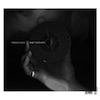
Heavy on percussion, the group have honed their rhythmic edge into a surgical knife. Stark, effective bass lines (sometimes just two notes) complete the rhythmic picture, adding a muscle to the rigid bones of the drumming. There is a vaguely ritualistic feeling to the music, for example on "Starts/Ends," where the percussion dances around itself to create a cathartic and engaging sound. Gavin Duffy’s immediate bass playing drags the music from this weirdly transcendent place back to the dance floor.
Without naming names, there are many artists who spend their time perfecting the ultimate post-punk album, drawing their inspiration from albums recorded 30 years ago and adding nothing more than a superficial glossiness to ideas that were once revolutionary but are now just a historical reference. So few artists try and break away from the past to create their own sound. While in the past I have heard the echoes of Sonic Youth, Throbbing Gristle and PIL in the music of Thread Pulls but on New Thoughts these influences have been pulverised and converted into Peter Maybury and Duffy’s own vision.
Duffy’s vocals are the other main ingredient to Thread Pulls unique sound. Sometimes adopting an odd but bewitching falsetto, not unlike a bleaker version of The Tiger Lillies’ Martyn Jacques, Duffy cannot be accused of being a boring vocalist. On "Sink and Swim," his voice rises up through the music sharply, demanding my attention. Elsewhere he delivers the mantric lyrics in a more controlled fashion such as on "Joujouka Reminder" where all the elements of Thread Pulls’ sound come together perfectly: the beat and word fusing into each other.
Throughout New Thoughts, Thread Pulls repeatedly up their game and make their previous releases pale in comparison. All the elements that I liked about their music (the rhythms and instrumentation in particular) have been streamlined and improved, the end result being a very lean and focused album. I have not seen them live in a while but I will be doing my best to catch them as soon as I can because they are obviously riding on the crest of a wave of inspiration.
samples:
 
Read More
- Administrator
- Albums and Singles
 Few artists can boast debut albums as stunning as this one, making its reissue after nearly three decades of unavailability something of a major event.  Originally recorded in 1983, the Soul Possession sessions assembled a murderer's row of talented collaborators such as Crass and UK dub heavyweight Adrian Sherwood to back young Annie Anxiety's animated and unseemly tales from the dark side.  Rightfully considered an underground classic, this album captures a rare "super group" in which everyone involved was at the top of their game, giving birth to something truly disturbing and visionary.
Few artists can boast debut albums as stunning as this one, making its reissue after nearly three decades of unavailability something of a major event.  Originally recorded in 1983, the Soul Possession sessions assembled a murderer's row of talented collaborators such as Crass and UK dub heavyweight Adrian Sherwood to back young Annie Anxiety's animated and unseemly tales from the dark side.  Rightfully considered an underground classic, this album captures a rare "super group" in which everyone involved was at the top of their game, giving birth to something truly disturbing and visionary.
Soul Possession has a somewhat improbable back-story, as the project was unknowingly set in motion when Annie decided to move from NYC to Germany following the dissolution of her band, Annie and the Asexuals (colorfully described in the liner notes as an "art-punk theater of pain").  Fate had other plans, and Annie wound up in London living with her new friends in Crass, an arrangement that resulted in the unexpectedly unpunk and tape-loop-informed Barbed Wire Halo 7", a collaboration with Penny Rimbaud that was issued on Crass Records in 1981.  Soon after, Annie met On-U Sound head Sherwood and the duo's shared love of dub resulted in this inventive and surprisingly dark collaboration.  Some mutual friends from the Crass collective were also pretty keen on dub at the time and gamely supplied much of the raw musical material.  In fact, Eve Libertine even takes lead vocals on one song, "Sad Shadows."
While a truly stellar outing for the most part, the album has two arguable flaws. The first is that Annie was occasionally a bit too conspicuous in betraying her punk/post-punk influences (such as with the anarcho-punk-esque lyrics in "Burnt Offerings"), which is unsurprising given her youth and the fact that she was living with Crass.  The second is that a cutting edge dub album recorded in 1983 necessarily sounds a little bit dated today.  Not as much as I'd expect, however– both Annie's vocals and Sherwood's production are outré and deranged enough to easily transcend such minor quirks though the slow, lurching drums and fretless bass sound are very much of their time.  In fact, it is pretty hard to tear my attention away from Annie's macabre and compelling narratives long enough to focus on much else.  Adrian, for his part, supplies more than enough studio-tweaked chaos and atmosphere to fill the gaps admirably.  Still, this is mostly Annie's show, and the album's highlights are those pieces where she pushes herself into singularly menacing, nightmarish territory.
The most disorienting of those songs is the uncomfortably lurid "Turkey Girl," where she sounds like a cross between Tom Waits and a depraved sex offender, dropping squirm-inducing lines like "you're my turkey fuck girl" and "I want to cut my cock on your pop top" as Sherwood unleashes bleeping and blooping electronics over a slinky bass line and horror movie piano.  Equally disturbed is the hitchhiker murder fantasy "Third Gear Kills," in which Annie ominously repeats "you're gonna die in the lay-by…tonight" and creepily describes stuffing a body in a trunk.  Remarkably, Bandez finds yet further frontiers in discomfort to explore with the absolutely stunning "Viet Not Mine, El Salvador Yours," employing a barrage of crazed-sounding overlapping voices, disjointed ramblings, moans, whimpers, and gasps over a sinisterly throbbing groove.
This album could not possibly be much further in tone from Annie's more recent work, though her infectious charisma remains a constant.  Bandez was not content here to merely indulge her dark side lyrically: she delivers her lines with a frightening conviction at times, sounding like someone teetering on the verge of a breakdown.  Even if Sherwood had played it relatively safe, Annie's damaged and threatening vocals could have easily carried the album, but he more than holds his own with his appropriately tense and hallucinatory soundscapes.  Despite all the echoing, gurgling, shimmering, and industrial textures, however, he still manages to maintain some rather propulsive grooves and unlikely hooks– a rather perverse accomplishment, as Annie's content renders the music singularly un-pop.  It all works beautifully, as I imagine this album would've been unlistenably raw and uncomfortable without such touches.  With them, Soul Possession is a deeply aberrant and uneasy near-masterpiece during its best moments.  This is still a very scary and harrowing album, of course, but it is not an inaccessible one.
Read More
- Matthew Jeanes
- Albums and Singles
 This digital-only EP released as an appetizer for the latest MBM full-length is a deliciously weird mixture of the sounds and ideas that make Meat Beat records so wonderful and unpredictable.
This digital-only EP released as an appetizer for the latest MBM full-length is a deliciously weird mixture of the sounds and ideas that make Meat Beat records so wonderful and unpredictable.
 
If Answers Come in Dreams is a tasty dish troubled only slightly by sameness, Totally Together is the perfect companion piece—a kind of sampler platter of the many directions that Meat Beat Manifesto can go at any moment.It represents an artist not tied down to any M.O. or tempo or method and that is, after all, one of the things that I've always found exciting about Meat Beat Manifesto records.
The EP's four tracks feature plenty of squelchy, acid-inspired bass and dub-infected effects called up from the familiar Jack Dangers menu, but each song distinguishes itself in a way that the tracks from Answers do not.Whether it's the vocal hook from "Totally Together," the maniacal Speak N Spell from "TRS2," or the traditional breakbeat in "Moving Body" that is nearly drowned in bass, each song has character.If you told me that "TRS2" was a MBM remix of Kraftwerk, I wouldn't be surprised and the fact that it plays right alongside the bubbling electro dub of "4OUR" is just a treat.
We need more digital download releases like this where artists are free to experiment while knocking out a couple of tracks that don't feed into a full album.The expectations of connectedness and weight put on albums sometimes leave good tracks like the ones here without a home.I'll take an EP of this quality without a physical disc any day.
Read More
- Administrator
- Albums and Singles
 Much like the roster of labels like Raster-Noton or Touch, Cristal work with a type of noise that is very different to the Merzbows and Whitehouses of this world. Instead of bludgeoning the listener with volume, these guys focus on the textures of the sound and keep the dynamics intact. The music on this album is like a macro photograph of a small but intricate piece of machinery covered in dust; there is a lot of detail but on a much smaller scale.
Much like the roster of labels like Raster-Noton or Touch, Cristal work with a type of noise that is very different to the Merzbows and Whitehouses of this world. Instead of bludgeoning the listener with volume, these guys focus on the textures of the sound and keep the dynamics intact. The music on this album is like a macro photograph of a small but intricate piece of machinery covered in dust; there is a lot of detail but on a much smaller scale.
When I first encountered Cristal based on the Labradford connection, I was surprised at how atonal their music was (especially considering that other spin-off Pan•American produced music of such a similar vein to the parent band). However, listening to Re-Ups, this makes a certain amount of sense as although the aesthetic is quite different, both groups capture similar moods. The five pieces included here suit very much these longer nights and autumnal smells in the air; a sense of decay but in a dry and dusty way and not in a pungent or gooey way. The processes at work here are slow, not glacially slow but at a pace that allows sounds to live, breathe and fall away in sufficient detail.
While “Stars, Hide Your Fires” starts off as a fairly pedestrian ambient track, the tiny details that develop throughout the piece make it shine. It never becomes intrusive but yet it does become far more interesting than its first humble minutes would suggest. In contrast to this delicate piece, “Left of Swept” is ear-stripping stuff. Mastered at a substantially higher volume than the preceding pieces, it is quite the shock when it starts. It gets a bit wearisome but luckily is only four minutes in length. The final piece, “Avici,” returns to the quiet and grainy sound of before. After the massive volume of the “Left of Swept,” the calmness makes the tiniest details seem huge and multifaceted and serves as a reminder that Re-Ups is quite a good album despite the derivative harsh noise near the end.
Re-Ups might not be the best noisy ambient album I have heard (most of the albums on the labels mentioned in the opening paragraph would do this sort of thing better), it certainly is not a waste of time. The earlier Cristal releases all tread similar ground, having another is not a pressing issue but might be worth investigating if in need of something pleasant to listen to after dark. Just make sure to skip the fourth track so as not to wake the neighbors!
samples:
Read More
- Administrator
- Albums and Singles
 Miami's Harry Pussy combined the raw, undisciplined approach of old school punk rock, the atonal harshness of noise, and the micro-track lengths of classic grindcore into a muddy mess of distortion and chaos. An early precursor to the noise/rock vibe Wolf Eyes has been pushing, HP stayed more in the realms of dirty punk rock rather than the more electronic inspired work of the Michigan Boys, with the exception of the dirty analog synth of "MS20", which apes any noise band at their own game.
Miami's Harry Pussy combined the raw, undisciplined approach of old school punk rock, the atonal harshness of noise, and the micro-track lengths of classic grindcore into a muddy mess of distortion and chaos. An early precursor to the noise/rock vibe Wolf Eyes has been pushing, HP stayed more in the realms of dirty punk rock rather than the more electronic inspired work of the Michigan Boys, with the exception of the dirty analog synth of "MS20", which apes any noise band at their own game.
Most of the tracks here follow the same formula of sloppy rapid-fire drumming, improbably disjointed but somehow consistent guitar playing and shrieking vocals, all of which is slapped together in an overdriving, clippy mess of music. While bearing little direct physical resemblance to the genre's current form, the sound is pure punk, and beats that earlier vaginally named band Pussy Galore at their own game. While most stick to those short grindcore-esque blasts, there is some discernable differences among tracks: "Peace Of My Ass" is a track of pretentious spoken word over top a buried drum track that, thankfully, ends in laughter to indicate that it was not a half-assed Patti Smith attempt. "Mandolin" is one of the few tracks that cross the three-minute mark into high end cymbal racket and guitar attacks that are more noise than punk by far.
The disc is split approximately half and half from studio and live recordings, but the lo-fi recording quality as a whole makes the designation irrelevant. On the live tracks, the retention of the between-track dialogue from the original performances gives a great contrast to hear: Adris Hoyos' calm stage banter and announcements of the upcoming track couldn't be more far removed from the uvula ripping screams that immediately follow. The single tracked performance "Live at Salon Zwerge" in its entirety nicely summarizes the live material here, a clattering mess of feedback, drums and screams that mostly resembles an extended improvisation of "Mandolin" that, for all its length, doesn’t get tedious or dull.
One thing to be considered is that there’s a great deal of redundancy on here. Being mostly live recordings and rehearsal tracks, some songs appear in multiple forms. While it’s great to have such a sprawling collection of all of these tracks, I'm not sure if there really needs to be five different versions of "Smash The Mirror" and four takes of "Chuck!" Hardcore HP fans will be glad to have each and everyone of these takes, but the more casual fan will probably be happy to just skip around and dabble here and there. Listening to in a single sitting might be a bit ennui inducing, but reproducing the tracklists of the original vinyls or playing passages here and there will more than satisfy the need for a scum rock enema.
samples:
Read More
- Administrator
- Albums and Singles
 Rather than simply drawing elements from 20th century synthesizer music, Reinhardt instead recreates it with a sense of modernity and development that is not simply a nostalgic collection of tracks, but a disc that fully reproduces the sound and sensation of the avant garde pieces, soundtracks, and pop songs that classic analog synthesizers ended up pushing their way into.
Rather than simply drawing elements from 20th century synthesizer music, Reinhardt instead recreates it with a sense of modernity and development that is not simply a nostalgic collection of tracks, but a disc that fully reproduces the sound and sensation of the avant garde pieces, soundtracks, and pop songs that classic analog synthesizers ended up pushing their way into.
In a way, this album represents a microcosmic study of synthesizer music from the past 18 or so years, because it features elements from so many genres, but still makes a cohesive set of songs that feels like a fully realized work. Some of the tracks like "Lyre of David" and "Blue Cutaway/Tore Earth Clinker" draw heavily on film scores and soundtracks of the 1970s and '80s. The beatless pieces and thick, dramatic synths call to mind the work of Vangelis (especially Blade Runner), Wendy Carlos Williams, and Carmine Coppola’s Apocalypse Now score. Obviously analog synths, they reproduce the sound of strings and brass as best as the technology could, but never lose that distinct synthetic quality.
Other pieces like "Every Terminal Evening" and "An Upright Fortune" integrate rudimentary drum machines into the mix which are closer to the spheres of synthpop than the other pieces, but still not quite The Human League or Depeche Mode. The former's highly sequenced bass synth and drum pattern feels like an antecedent of some of Throbbing Gristle's poppier material, but rather than the dark and subversive nature of their work, Reinhardt's is lighter and more atmospheric. The latter is more conventional in its rhythms, the deep bassy synths giving an almost danceable vibe.
There are some moments that integrate elements of current electronic music that bears little direct resemblance, but still has some of the same ingrediants. The constant kick drum thump rhythms of "Fast Blot Declining" and the beeps and proto-303 sawtooth synth leads of "Tentshow" have all of the makings of electro-influenced techno music, but instead remains dramatic and atmospheric rather than danceable. Even in "Lord Sleep Monmouth," the slow arpeggiated synths and swirling leads lean towards prog rock, but stays more open and spacious, rather relying on that genre's focus on the overly dense or complex.
The more "out there" tracks such as "Tandem Suns" and "Crept Idea For Mom" are more along the lines of the avant garde electronic music of the 1960s and 70s, the former is slower and propelled by a filtered drum machine and a greater sense of tension than the other more airy works, and is further altered by a noisier, grimier synth line at the end. "Crept Idea For Mom" is more rhythmic and less lush than the others on the album, full of odd sci-fi textures and effects and treatments that make it somewhat more esoteric than the other pieces.
While it bounces from genre to genre, the pieces are all self-contained, but strung together with a sense of atmosphere and mood that is the audio equivalent of a collection of short stories. While each differs and goes in their own direction, the overall feeling is a consistent and captivating work that shows the depth and variety of a now-dated technology that never lost its specific color or tone.
samples:
Read More


